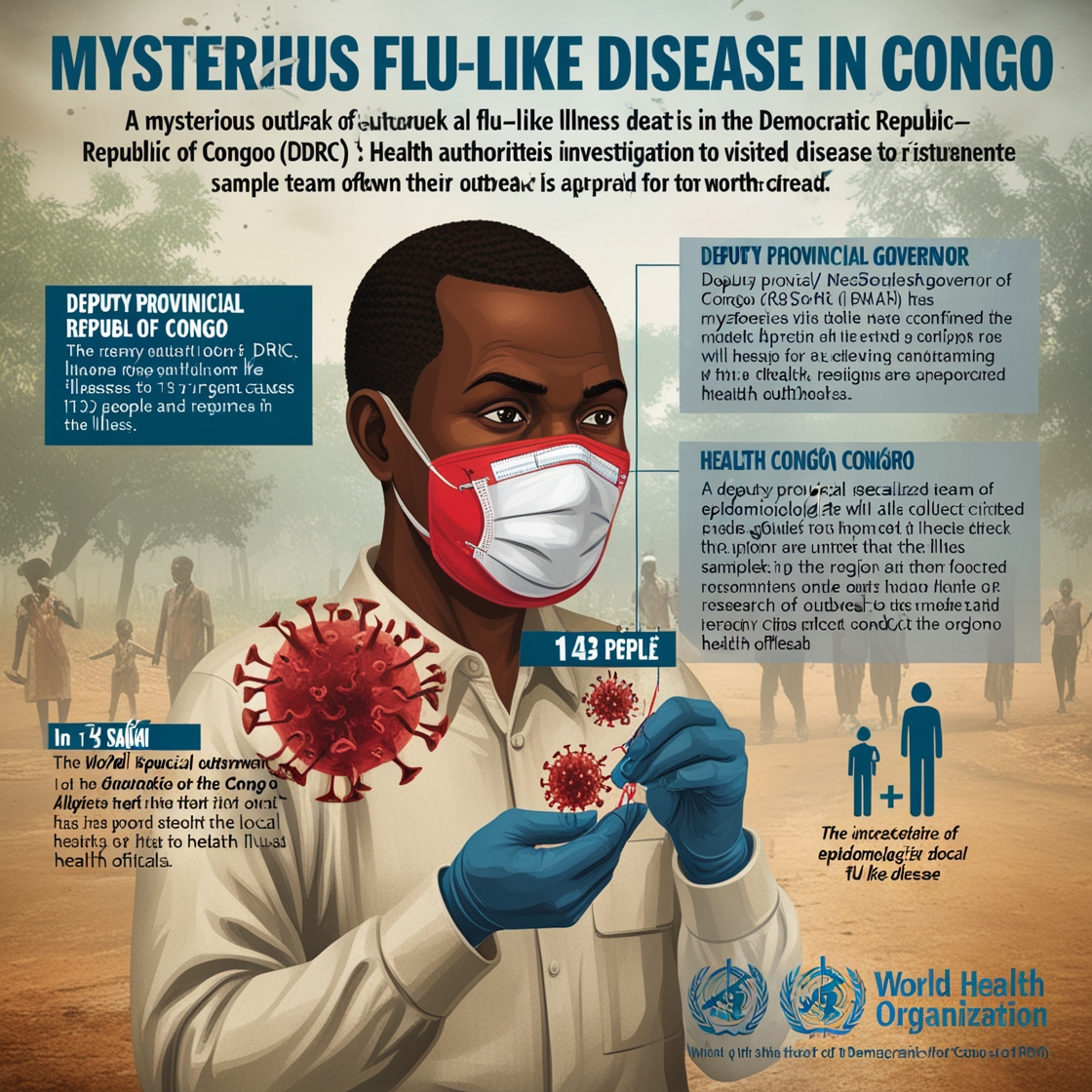A mysterious outbreak of a flu-like illness in the Democratic Republic of Congo (DRC) has caused alarm, leading to the deaths of 143 people so far. Health authorities have launched an urgent investigation to identify the cause of the disease and prevent further spread.
Deputy Provincial Governor Rémy Saki confirmed that a specialized team of epidemiologists will visit the affected region to collect samples and conduct critical research to determine the origins of the illness. The outbreak has already been reported to the World Health Organization (WHO), which is closely monitoring the situation alongside local health officials.
Mysterious Outbreak Raises Concerns
The unknown disease, which presents symptoms similar to the flu, has spread rapidly, sparking fear of a potential epidemic. Victims have reported fever, respiratory issues, body aches, and fatigue. These flu-like symptoms mirror other infectious diseases commonly seen in the region, such as malaria, Ebola, and respiratory infections, making early diagnosis and containment challenging.
Authorities are taking swift measures to ensure public health safety. Health teams are being dispatched to affected communities to conduct investigations, collect data, and provide emergency care to patients. While no official cause has yet been determined, experts are considering viral, bacterial, or environmental factors.
Congo’s Ongoing Fight Against Infectious Diseases
This mysterious outbreak comes at a time when the DRC is already battling other infectious diseases. Mpox (formerly known as monkeypox) remains a significant health crisis in the country. In 2023 alone, over 14,000 mpox cases and 650 deaths were reported, the highest figures recorded in the WHO African region.
As of May 2024, the DRC reported nearly 8,000 cases of mpox and more than 380 deaths. Public health authorities are working tirelessly to contain both the mpox epidemic and this new unidentified illness to prevent further loss of life.
International Response and Health Measures
The World Health Organization has expressed concern over the severity of the outbreak and has pledged support to Congolese health officials. Experts stress the importance of early detection, proper medical interventions, and heightened public awareness to stop the disease’s spread.
Preventative measures, such as hand hygiene, wearing masks, and avoiding crowded areas, are being recommended to residents in affected regions. However, limited healthcare infrastructure in rural areas could pose challenges in delivering timely treatment and curbing transmission.
What’s Next in the Investigation?
The team of epidemiological experts traveling to the DRC will focus on identifying the pathogen responsible for the outbreak. By analyzing samples from infected patients, authorities hope to determine whether the illness stems from a new virus or a mutated strain of a known disease.
The findings will play a critical role in shaping containment strategies and ensuring that medical resources are effectively allocated. As the investigation unfolds, global health agencies and local officials are working in tandem to protect vulnerable communities and prevent the disease from spreading beyond borders.
Conclusion
The mysterious flu-like disease that has claimed 143 lives in Congo highlights the ongoing need for robust disease surveillance and emergency response systems. With international organizations like the WHO stepping in, authorities remain hopeful that they can identify the cause and contain the outbreak.
This alarming situation serves as a reminder of the importance of global health preparedness in the face of emerging infectious diseases. Stay tuned for more updates as investigations continue.

